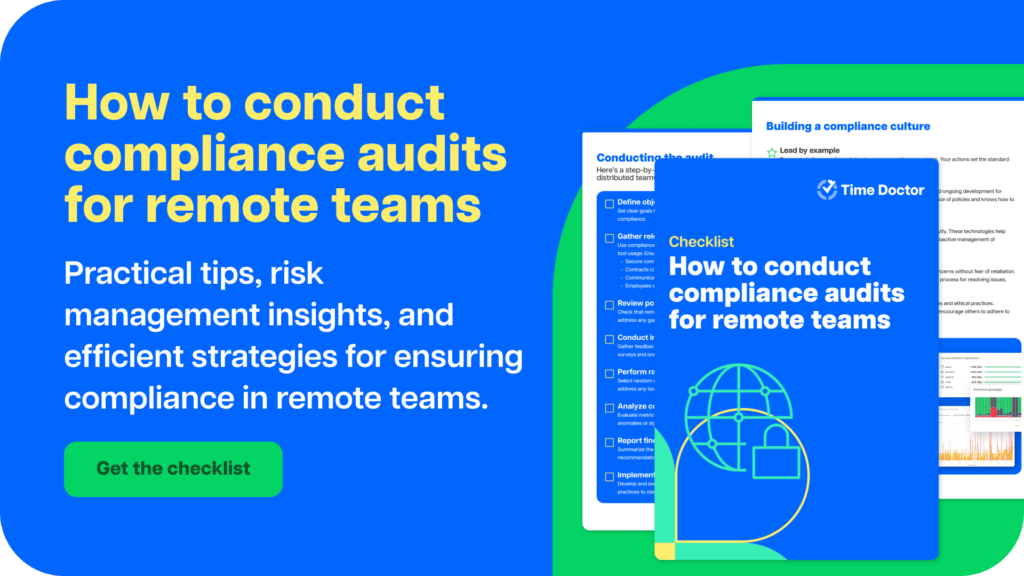In a world where accountability and integrity are crucial for business success, compliance goes beyond just following the law. When there’s non-compliance, it’s not just an inadvertent slip-up; it’s a major problem that needs immediate corrective action.
Correcting non-compliance isn’t just about avoiding penalties; it’s about reinforcing the trust and confidence of stakeholders, customers, and employees. This process strengthens your organization’s procedures, reinforces your core values, and improves overall effectiveness.
Let’s explore the essential steps to turn compliance challenges into opportunities for growth and continuous improvement.

Step 1: Identify non-compliance and its root causes
Determining the problem and its root causes is the first step in correcting non-compliance. Several things can indicate non-compliance, such as missing paperwork or breaking rules unique to a given business. How to find these problems is as follows:
- Conduct regular internal auditing: Utilize internal audits and compliance evaluations to assess how your company is doing. Internal auditing reveals process weaknesses and unexplained non-compliance issues, which helps maintain compliance with laws like the Health Insurance Portability and Accountability Act (HIPAA).
- Leverage technology: Using workforce analytics software like Time Doctor to monitor key performance indicators like employee behavior and accurate timekeeping. With the use of this technology, possible non-compliance hotspots can be found.
When you’ve determined whatever non-compliance issues exist, next, you have to find out why they exist.
Outdated policies, inadequate training, or a lack of resources are the root causes of these issues?
Being fully aware of the underlying issues is essential for taking effective corrective action.
Step 2: Develop a robust Corrective Action Plan (CAP)
A comprehensive Corrective Action Plan (CAP) is essential for effectively correcting non-compliance issues. Here’s how to create a CAP that works:
- Set SMART objectives: Your CAP should have SMART (specific, measurable, achievable, relevant, and time-bound) goals. If time tracking is the problem, for instance, a SMART goal would be, “Install a new time-tracking system within 60 days to ensure 100% compliance with labor laws and Centers for Medicare & Medicaid Services (CMS) requirements.”
- Assign responsibilities: Clearly state who the compliance officer is in charge of each CAP duty. This could involve updating internal policies to comply with the Code of Federal Regulations (CFR) or retraining employees on the company’s code of conduct.
- Incorporate flexibility: Ensure your CAP is adaptable to changes. Compliance is a dynamic field, and your CAP should accommodate revisions in internal procedures or regulations, including CMS requirements or updates to federal health care programs.
Step 3: Prioritize and implement corrective actions
Not all compliance issues carry the same level of risk. Some may require immediate attention, while others can be addressed over time. Prioritization is key:
- High-priority actions: Any violations that could damage your company’s reputation or incur serious penalties, such as breaking HIPAA or Medicare Parts C regulations, should need immediate, appropriate corrective action.
- Low-priority actions: Concentrate on changing internal policies and procedures necessary for long-term compliance but don’t provide immediate disciplinary action.
During implementation, effective lines of communication at all levels of the organization must be maintained. Regular updates on progress and accountability checks help keep everyone aligned.

Step 4: Monitor progress and ensure continuous improvement
Correcting non-compliance is an ongoing process that requires continuous monitoring and a commitment to improvement.
- Use compliance software: Time Doctor and similar tools can automate monitoring procedures, guaranteeing compliance risks—like data security and employee behavior—are continuously evaluated. This offers real-time insights into your company’s compliance status and lessens the strain on your compliance department.
- Conduct regular reviews: Schedule periodic reviews of your compliance processes to evaluate their effectiveness. Are the corrective actions having the desired impact? Are new compliance concerns emerging? Use this information to make necessary adjustments.
Proactive monitoring and regular assessments are key to maintaining compliance and avoiding potential issues.
Step 5: Foster a culture of compliance
The most effective way to correct and prevent non-compliance is to embed a culture of compliance within your organization:
- Compliance training and education: Regular compliance training sessions are crucial. Employees should understand both the company’s standards of conduct and the importance of compliance in their daily roles. This includes understanding the seven core compliance program requirements and the consequences of non-compliance, such as civil monetary penalties.
- Open communication: Encourage employees to report suspected violations or problems with compliance without worrying about facing consequences. A good way to collect these reports and make sure the right remedial action is done is to set up a compliance hotline.
- Recognition and incentives: Acknowledge and reward compliance within your organization. Recognizing employees who adhere to compliance standards promotes a culture where compliance is valued.
Conclusion
Correcting non-compliance involves more than just solving current problems; it also entails setting the foundation for a long-lasting and moral compliance system. Your organization may confidently manage the intricacies of compliance by recognizing non-compliance, creating a strong corrective action plan, prioritizing remedial activities, and promoting a culture of continuous improvement.
Time Doctor and other similar tools can greatly assist in this process, offering the knowledge and assistance required to maintain constant compliance. The ultimate goal is to establish a workplace where trust is the cornerstone of all operations and compliance is second nature.
These actions can help you make sure your business stays compliant—not merely to satisfy regulatory requirements but also to foster an ethical and superior culture that promotes long-term success.

Liam Martin is a serial entrepreneur, co-founder of Time Doctor, Staff.com, and the Running Remote Conference, and author of the Wall Street Journal bestseller, “Running Remote.” He advocates for remote work and helps businesses optimize their remote teams.


